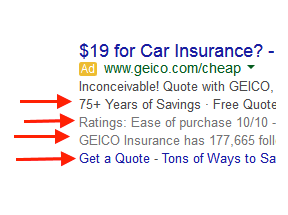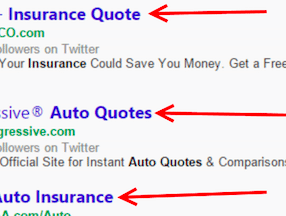Each year I review my previous year’s trend predictions for pay-per-click ecommerce advertising. In last year’s post, I predicted three trends: the rise of Google Shopping campaigns, the growth of remarketing, and pay to play for social media. All three were realized in 2015.
For this 2016 post, I included other PPC experts. I asked each to answer this question: “What two trends do you see emerging in ecommerce PPC in 2016?”
PPC Predictions for 2016
Brad Geddes: Founder of AdAlysis.com and CertifiedKnowledge.org.
“My predictions for PPC ecommerce have more to do with ecommerce companies catching up than it does with a brand new trend. I think we’re going to see these two — some would call old formats and features — AdWords’ features more highly leveraged in the ecommerce space.
- “More companies realizing dynamic search ads are actually useful as backfill inventory and finding success with those overly-maligned DSAs.
- “Ecommerce companies leveraging their large email lists with Gmail sponsored promotions and customer match.
“I see so many companies not using those features and many are starting to look into them as they try to find new inventory in a crowded marketplace.”
—
Elizabeth Marsten: Director of paid search at CommerceHub, a marketing platform.
- “Buy buttons. I see more experimentation and exploration, but a very slow adoption on all sides; from the platforms (impressions served), the advertisers (electing to participate and jumping through the development hoops) and the audiences that buy.
We’ll see more platforms trying to lessen the friction between the ad impression and the sale, yet the adoption of those methods is going to be slow going, but definitely present. And for companies that have worked hard to establish a brand experience through their site and social channels, they’ll be staying away from this until there is some very definitive evidence showing the benefits.
- “Vertical specific shopping. I see growth and adoption in niche platforms monetizing more efficiently like Polyvore, Pinterest, and Houzz. Those platforms are probably the furthest right now in terms of ability to blend into a social community and, in some cases, without having a strong social presence or profile on that platform to sell. The way in which their goods can be shared, displayed, and interacted with on that platform within an advertising capacity is growing in adoption and acceptance.
“If you look through a ‘set’ on Polyvore and it has a pair of shoes you simply must have, you’re not going to really care if the seller has a lot of followers or likes — though it does help around visibility of products in the first place. You’re going to buy those shoes and you’ll be back to browse again.”
—
Matt Umbro: Founder of #PPCChat.
- “It’s been going on for a couple years now, but audience based advertising will continue to improve its targeting capabilities. The landscape is such that channels like Facebook and Twitter, which were once considered ancillary platforms, now need to strongly be considered. If they are thrown aside, merchants will lose customers.
- “Ads will continue to be more dynamic. We’ve seen this shift with AdWords’ ad customizer data and ads in general speaking to individual consumers and not the masses. Consumers now expect a more personalized research and shopping experience, which advertisers need to provide.”
—
Maria Corcoran: Search marketing manager at Adobe.
- “Audience targeting will be something that you simply cannot or should not ignore in 2016. The power of utilizing information from customer management systems and past user behavior on your own website to target audiences that have yet to convert is huge. Add this to remarketing lists for search ads and dynamic search ads. If you can then provide a highly personalized experience for the user upon site entry, you have a winning combination for conversion.
- “Video ads are an exciting way to reach your audiences in 2016. As Google and YouTube release more and more integration, such as TrueView ads within the AdWords management interface, this is an area that paid search marketers will be able to more easily explore in 2016. Just remember to always set your goals accordingly. Conversions for video ads may not necessarily mean a product purchase. Instead, treat video ads as a display account and look for higher funnel metrics such as cart adds and product views.”
—
Kirk Williams: Owner of Zato, a search marketing firm.
- “I see Google moving towards dynamic search. We’ll see more effort and work put into dynamic search ads — possibly new related-campaign types. 2016 might be the year Bing introduces DSA, as well.
- “Related to this is Google Shopping, which will only become more important in ecommerce search. We saw the main user interface changes done already for Shopping. Google and Bing will continue to build more effort into algorithm changes to make their systems even more accurate. My 2016 ecommerce wish to go along with this is a major overhaul of Google Merchant Center!”
My View
My view is that consumers’ expectations are ever increasing and ecommerce advertisers have to deliver a better experience to get the sale. Dynamic search ads in Google and dynamic retargeting ads from Facebook are ways that advertisers will be able to up their game. Both allow ads to be customized to the user based on search history or website behavior.
We will also see more audience-based targeting. Whether it’s using big data, customer email lists, or profile information for social PPC, sophisticated advertisers can increasingly target more qualified prospects with more relevant messaging. This leads to improved conversion rates, more sales, and better profits.
What trends do you see coming in 2016?




